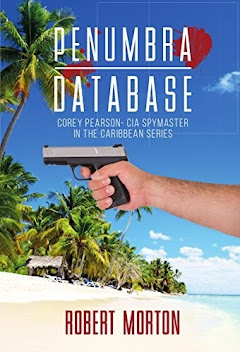 |
| Tagged for Tracking or Trained for Espionage? A Red-Tailed Hawk Gets a High-Tech Upgrade! |
There’s a pair of red-tailed hawks that nest in the woods behind my house. I watch them almost daily as they soar effortlessly over my yard, scanning for mice and rats like skilled aerial assassins. Sometimes, I imagine they recognize me, like old neighbors who tolerate my presence but wouldn’t think twice about snatching a squirrel right off my lawn.
Lately, though, I’ve started looking at
them differently. What if they weren’t just hunting? What if they were
watching? Not for food, but for someone else. Maybe even the CIA.
Sounds crazy, right? Well, not if you’ve
heard of Operation Spy Hawk, one of the CIA’s more… let’s say, ambitious
Cold War projects. Back in the late 1960s, the CIA’s Office of Research and
Development (ORD) had a lightbulb moment: Why not train a red-tailed hawk to be
a spy? Pigeons had been used for reconnaissance as far back as World War I, so
why not upgrade to a raptor with better flying skills and keener eyesight? The
plan was simple—strap a tiny camera to the hawk’s neck, train it to recognize a
specific Soviet radar site, and let it take a perfectly timed snapshot. Easy,
right?
Well, not exactly. The first problem? The
camera could only take one photo. Just one. No room for error. The hawk had to
be trained, not just to fly over the target, but to recognize the
precise moment to snap a picture. Imagine trying to teach a bird of prey to be
an Ansel Adams of Cold War espionage. Good luck with that.
But the real kicker? The CIA somehow forgot
to check if red-tailed hawks were a protected species. Turns out, they were.
Which meant transporting one for a top-secret spy mission was, well… illegal.
Oops. So, in a classic CIA pivot, they switched to an unprotected bird: a crow.
Now, if you thought training a hawk was
hard, imagine trying to get a crow to cooperate. On top of that, transporting
it to the Soviet target was a logistical nightmare. The only viable route
involved smuggling the bird by boat through the Baltic and up the canals of
Denmark and Sweden—areas where the Soviets kept a watchful eye on boat
movements. A suspicious American vessel creeping up the coast with a very
special crow onboard? Not exactly the cloak-and-dagger espionage they were
hoping for.
And just like that, Operation Spy Hawk was
scrapped. No spy hawk. No spy crow. No Soviet radar photos. Just another entry
in the long list of bizarre Cold War intelligence projects that sounded great
in a brainstorming session but collapsed under the weight of reality.
Now, while the real-life CIA fumbled their
way through avian espionage, my fictional CIA spymaster, Corey Pearson, has a
much smoother operation. In my Corey
Pearson-CIA Spymaster spy thriller series, his elite team has perfected
the art of using birds for intelligence gathering. They equip raptors with tiny
surveillance devices to infiltrate enemy compounds undetected. No fumbling, no
legal loopholes—just efficient, high-tech bird spies doing their job without
getting caught. It’s the kind of espionage the real CIA wished they had
pulled off.
Still, whenever I watch my red-tailed hawk
neighbors circling above, I can’t help but wonder. What if they’re more than
just hungry hunters? What if one of them is a relic of an abandoned
intelligence experiment, still programmed to scan the ground for strategic
targets? If a tiny camera ever falls into my yard, I’ll know I was right all
along
Robert Morton is a member of the Association of Former Intelligence Officers (AFIO) and an accomplished author. He writes the Corey Pearson- CIA Spymaster Short Story, blending his knowledge of real-life intelligence operations with gripping fictional storytelling. His work offers readers an insider’s glimpse into the world of espionage, inspired by the complexities and high-stakes realities of the intelligence community.





No comments:
Post a Comment